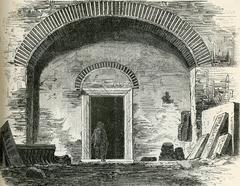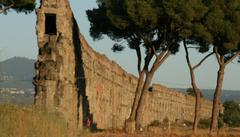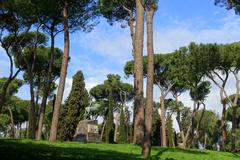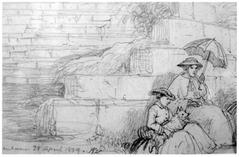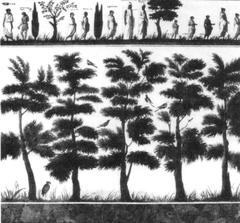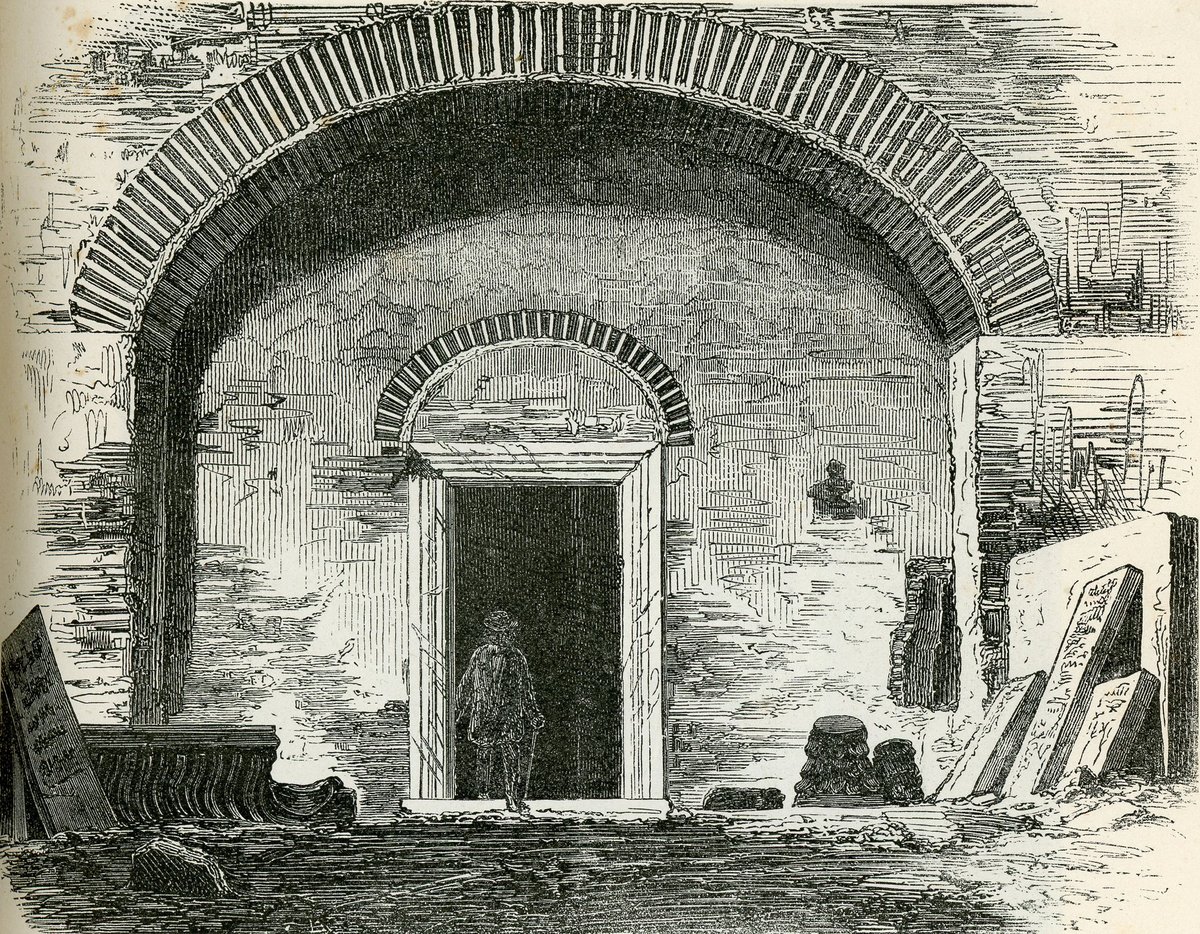
Guide to Visiting Basilica di San Sebastiano fuori le mura in Grottaferrata, Italy
Date: 18/07/2024
Introduction
Discover the profound historical, cultural, and religious significance of the Basilica di San Sebastiano fuori le mura, located in Grottaferrata, Italy. This comprehensive guide will provide you with all the essential information to plan your visit, including the basilica’s rich history, ticket prices, opening hours, and travel tips.
The Basilica di San Sebastiano fuori le mura, also known as St. Sebastian Outside the Walls, dates back to the early Christian period of the 4th century AD. Initially constructed as a burial site for martyrs, particularly St. Sebastian, the basilica has undergone numerous renovations and enhancements over the centuries, reflecting a blend of early Christian, Renaissance, and Baroque architectural styles (Catholic Encyclopedia). Today, it stands as a testament to the enduring legacy of early Christian martyrs and their influence on the development of Christian traditions, attracting pilgrims and tourists alike from around the world (Sacred Destinations). In addition to its historical significance, the basilica also serves as a vibrant place of worship, hosting regular liturgical services and special events throughout the year (Liturgical Press). Whether you’re a history enthusiast, an architecture lover, or a spiritual pilgrim, this guide will ensure a memorable and enriching visit to this remarkable site.
Table of Contents
Historical Background
Early Christian Origins
The Basilica di San Sebastiano fuori le mura, also known as St. Sebastian Outside the Walls, is a significant historical and religious site located in Grottaferrata, Italy. Its origins date back to the early Christian period, specifically the 4th century AD. The basilica was initially constructed as a burial site for martyrs, particularly St. Sebastian, a Roman soldier who converted to Christianity and was martyred during the reign of Emperor Diocletian. The site was chosen due to its proximity to the catacombs, which were used as burial places for early Christians (Catholic Encyclopedia).
Construction and Architectural Evolution
The original structure of the basilica was relatively modest, reflecting the early Christian architectural style characterized by simple, functional designs. However, significant renovations and expansions occurred over the centuries. In the 9th century, Pope Nicholas I ordered the reconstruction of the basilica, enhancing its structure and adding more elaborate decorations. The most notable architectural transformation took place during the Renaissance period under the patronage of Cardinal Scipione Borghese in the early 17th century. The basilica was redesigned by the renowned architect Flaminio Ponzio, who introduced Baroque elements, including a new façade and an ornate interior (Rome Art Lover).
Significance During the Middle Ages
During the Middle Ages, the Basilica di San Sebastiano fuori le mura gained prominence as a pilgrimage site. It was one of the Seven Pilgrim Churches of Rome, a group of churches that pilgrims visited as part of their spiritual journey. The basilica’s association with St. Sebastian, who was venerated as a protector against plagues, further increased its importance. Pilgrims believed that visiting the basilica and venerating the relics of St. Sebastian would provide divine protection against diseases (Sacred Destinations).
Renaissance and Baroque Enhancements
The Renaissance and Baroque periods brought significant artistic and architectural enhancements to the basilica. Cardinal Scipione Borghese, a prominent patron of the arts, commissioned several artists to decorate the basilica. One of the most notable contributions was the frescoes by Giovanni Baglione, depicting scenes from the life of St. Sebastian. Additionally, the basilica’s crypt, which houses the relics of St. Sebastian, was adorned with intricate mosaics and marble decorations. These enhancements not only beautified the basilica but also reinforced its religious significance (Rome Art Lover).
Modern Era and Preservation Efforts
In the modern era, the Basilica di San Sebastiano fuori le mura continues to be a site of religious and historical importance. Preservation efforts have been undertaken to maintain the basilica’s structural integrity and artistic heritage. In recent years, restoration projects have focused on conserving the frescoes, mosaics, and architectural elements that have deteriorated over time. These efforts ensure that the basilica remains a testament to the rich history and cultural heritage of early Christianity and the subsequent artistic movements that shaped its evolution (Vatican News).
Cultural and Religious Impact
The cultural and religious impact of the Basilica di San Sebastiano fuori le mura extends beyond its architectural and artistic significance. The basilica serves as a symbol of the enduring legacy of early Christian martyrs and their influence on the development of Christian traditions. It also highlights the role of religious patronage in the arts, as seen through the contributions of figures like Cardinal Scipione Borghese. The basilica’s continued use as a place of worship and pilgrimage underscores its lasting relevance in contemporary religious practices (Sacred Destinations).
Archaeological Discoveries
Archaeological excavations around the basilica have uncovered significant findings that provide insights into its historical context. In the 20th century, excavations revealed ancient Roman tombs and artifacts, shedding light on the burial practices and daily life of early Christians. These discoveries have contributed to a deeper understanding of the basilica’s origins and its role within the broader historical and cultural landscape of ancient Rome (Archaeology Magazine).
Influence on Art and Architecture
The Basilica di San Sebastiano fuori le mura has influenced various aspects of art and architecture throughout its history. Its early Christian design elements served as a model for subsequent church constructions, while its Renaissance and Baroque enhancements inspired artists and architects of those periods. The basilica’s blend of architectural styles reflects the evolving artistic trends and religious practices over the centuries, making it a valuable study subject for historians and art enthusiasts alike (Rome Art Lover).
Visitor Information
Ticket Prices and Visiting Hours
Find out the latest ticket prices and visiting hours for the Basilica di San Sebastiano fuori le mura. Plan your visit accordingly to make the most of your trip. The current visiting hours are from 9:00 AM to 6:00 PM, and tickets can be purchased on-site for €10.
Travel Tips
Learn about the best times to visit the basilica to avoid crowds and explore nearby attractions to make your trip even more memorable. The best time to visit is during the early morning or late afternoon to avoid peak hours. Nearby attractions include the Catacombs of San Callisto and the Abbey of Grottaferrata.
Dress Code
As a place of worship, visitors are expected to dress modestly. Shoulders and knees should be covered.
Photography
Photography is allowed in most areas of the basilica, but it is recommended to avoid using flash to preserve the artworks.
Accessibility
The basilica is wheelchair accessible, with ramps and elevators available for those with mobility issues.
Nearby Attractions
The basilica is located near other significant sites, such as the Catacombs of San Callisto and the Appian Way, making it convenient for visitors to explore multiple historical sites in one trip.
Local Cuisine
Grottaferrata is known for its delicious local cuisine. Be sure to try traditional dishes such as “porchetta” (roast pork), “cacio e pepe” (cheese and pepper pasta), and local wines from the Castelli Romani region.
Safety Tips
Grottaferrata is generally a safe destination, but it is always wise to take standard precautions. Keep an eye on your belongings, especially in crowded areas.
Language
While Italian is the primary language spoken in Grottaferrata, many people in the tourism industry speak English. Learning a few basic Italian phrases can enhance your experience and help you connect with locals.
Currency and Payments
The currency used in Italy is the Euro (€). Credit and debit cards are widely accepted, but it is a good idea to carry some cash for small purchases or in case you visit places that do not accept cards.
Emergency Contacts
In case of an emergency, the following numbers are essential:
- Police: 112
- Ambulance: 118
- Fire Department: 115
Souvenirs
Consider purchasing unique souvenirs to remember your visit. Local crafts, religious items, and regional food products make excellent mementos. The basilica’s gift shop often has a selection of religious artifacts and books.
Respectful Behavior
As a place of worship, it is important to maintain a respectful demeanor while visiting the basilica. Keep noise levels low, refrain from using mobile phones inside the church, and be mindful of ongoing services or prayers.
Conclusion
In summary, the Basilica di San Sebastiano fuori le mura in Grottaferrata, Italy, is a site of immense historical, cultural, and religious significance. From its early Christian origins to its Renaissance and Baroque transformations, the basilica offers a rich tapestry of architectural and artistic heritage. Visitors can explore its beautifully adorned interior, learn about its history through guided tours, and participate in its vibrant liturgical life. The basilica continues to be a major pilgrimage site, attracting visitors from all over the world who seek to venerate the relics of St. Sebastian and experience the profound spiritual atmosphere of this sacred place (Rome Art Lover). Preservation efforts ensure that future generations can continue to appreciate its beauty and significance. We hope this guide helps you plan an unforgettable visit to the Basilica di San Sebastiano fuori le mura. For more updates and travel tips, be sure to check out the official website or follow them on social media.
FAQ
What are the visiting hours for the Basilica di San Sebastiano fuori le mura?
The basilica is open daily from 9:00 AM to 6:00 PM. It is advisable to check the official website for any updates on visiting hours.
Are there guided tours available at the basilica?
Yes, guided tours are available in multiple languages, including English, Italian, and Spanish. These tours provide detailed insights into the basilica’s history and significance.
Is there an admission fee to visit the basilica?
Admission to the basilica is €10, but donations are appreciated to help with maintenance and restoration efforts.
What should I wear when visiting the basilica?
As a place of worship, visitors are expected to dress modestly. Shoulders and knees should be covered.
What are some nearby attractions?
Nearby attractions include the Catacombs of San Callisto and the Abbey of Grottaferrata.
